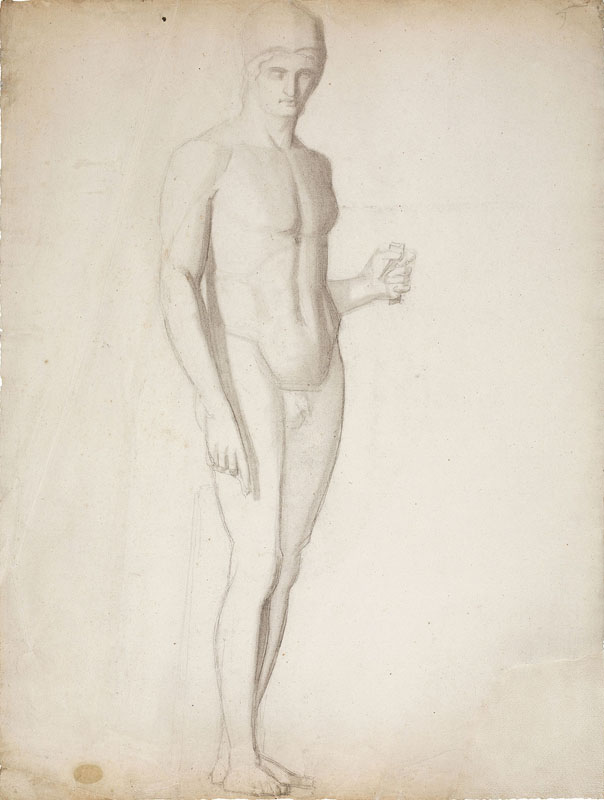Listen to co-curator Sarah Lees discuss Renoir’s earliest known drawings

Study of the Borghese Mars, ca. 1862–63
Private collection, Paris.
It might seem surprising that these two carefully drawn studies of classical sculptures were made by Renoir. In fact, this sheet and the one next to it—along with the sketchbook pages displayed in the case—are among his earliest surviving drawings. They were probably made after he had been a student at a free municipal drawing school in his neighborhood, and around the time he entered the national art school, the École des Beaux-Arts. In 1860 Renoir was granted permission to make drawings of art in the Louvre, and, in accordance with traditional teaching methods, he copied classical Greek and Roman sculptures to learn how to depict human anatomy. Both the Richelieu Mercury and the Borghese Mars are Roman marble sculptures of the first or second century that were seized or forcibly purchased, respectively, in Italy during the French Revolution and the Napoleonic period to enhance the rapidly growing classical antiquities collection of the Louvre. They were very well known in Renoir’s time. The simplified contours and shading of his drawings reflect both the idealized forms of the sculptures and the precepts of his drawing teacher, who encouraged students to start by outlining basic shapes and then adding detail, and to use soft shading rather than sharp crosshatching to model three-dimensional forms. These two student drawings were among a group of related studies that remained in Renoir’s family and were inherited by his nephew. They were virtually unknown until 1982, when they were sold to another private collection, and have not been on public view since.
